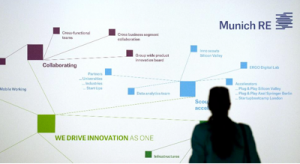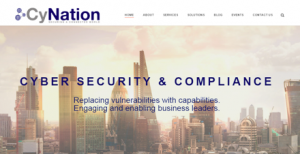Insurance market does not stay aside of technological revolution. It keeps abreast of the tech-developments and initiatives developing new insurtech ecosystem. Media about fintech in Ukraine and globally, “Future” magazine, represents TOP-10 insurtech trends, which were consolidated through participation at leading global tech (fintech) events within last 2 months:
Trend #1 In-house acceleration is becoming a global trend in insurance practice
Practice of an effective startups and ideas’ development via in-house accelerators and incubators created and funded by insurers and insurance groups.
Case studies:
Previously Allianz decided to develop its own accelerator AllianzX, and now MetLife launches insurtech accelerator – LumenLab. MetLife’s innovation center is calling for new products via new acceleration programme.
Photo: MetLife’s innovation center
Trend #2 Underwriting automation
Agile underwriting, improved risk selection, and a better consumer experience, providing customers with immediate and risk-adequate decisions directly at the point of sale.
Case study:
As a case study Hannover ReFlex project realising by Hannover Life Reassurance Company of America (“Hannover Re US”), a member of the third largest reinsurance group in the world, and Ladder, software developer, that brings smart life insurance offering with Hannover Re’s risk management and automated underwriting solutions. The result is a seamless, transparent life insurance experience that consumers not only feel confident in, but is also efficient and beautifully designed. The benefits of this partnership will be available immediately upon Ladder’s consumer launch in the coming months.
Trend #3 Blockchain technology’s insurance appliance
Investments in blockchain-related start-ups across industries have grown to more than $800 million, according to McKinsey – and the insurance industry is taking note. Since 2014 AXA, Generali, Allianz, Lloyds of London, Mutual Insurance and MetLife have poured millions into blockchain research, determined to strengthen ties with consumers, regulators and each other.
Case study:
As a real case of insurance appliance of blockchain technology – recent project realized by insurance giant subsidiary, Allianz Risk Transfer AG (ART) and Nephila Capital, the world’s largest reinsurance risk investors. Within the pilot test they have managed to use blockchain-based smart contracts to conduct a natural catastrophe swap. As a result it was mentioned that processing and settlement can be significantly fast-tracked and simplified between insurers using blockchain technology. Also blockchain can be applied for micro-insurances allowing to low handling costs, but only in case if underwriting and claims handling are automated and based on defined rules and the availability of reliable data sources.

Trend #4 Insurers invest in IOT
It helps to catch consumers’ behaviour shifts and to develop different pricing models (e.g. telematics – “pay as you drive” model); to collect big data and to turn it into the benefit of the customers through launching relevant products. And also IOT allows to implement claim automatic processes using different devices.
Case study:
Home assets insurance integrated with smart home solutions – Cozify.
Trend #5 AI-driven automation
A formal branch of artificial intelligence, machine-learning, builds systems that learn directly from the data they are fed and effectively program themselves to analyse that data and make accurate predictions. Having already helped multiple business sectors create new models and drive competitive advantage, now it’s the turn of the insurance industry. So just how is machine-learning changing the way insurers do business? It gives them 3 distinct advantages. The first is to mine greater volumes of data, the second – to scale analytics across the organisation by working smarter and faster, and lastly by answering more complex questions from ‘will this customer leave me to renewal?’ to ‘what can I do about it?’ it enables companies to grow up their predictive accuracy. And also machine-learning can be applied in the real world of insurance fraud detection.
Case study:
AIG has invested in Human Condition Safety, an early stage company matching wearable technology with artificial intelligence.

Trend #6 To get closer to your customers and provide them a personalised service
Instead of developing and selling products, it means working backwards from customer needs and expectations. That digitalisation is what customers want is not in doubt: 79% of consumers worldwide say they will use a digital channel for insurance interactions over the next few years, according to a report from Bain & Co.
Case study:
Dutch general insurer InShared, one of the first of the new breed of companies to be a fully digital insurer, offering a virtual assistant on its website from 2012 that answers 56 per cent of the company’s non-claims customer contacts. From initial quote to making a claim to booking any necessary repairs, everything can be done online, which keeps costs low and makes the customer feel in control.
Trend #7 Driving innovation through collaboration
Combining the depth of experience of insurance companies and the creativity and agility of start-ups will accelerate the industry’s digital transformation and enhance its ability to respond to future challenges.
Case study:
Munich Re partnership with TROV to bring on-demand insurance to the U.S.
Trend #8 Protecting your customer and business in the connected world
Debates around data security and privacy will only intensify as insurers look to refine and build products using new information flows. Can the industry strike a balance between creating valuable personalised services and respecting customers’ sense of privacy? Are insurers equipped to meet their obligations in a world of growing cyber risk? The answer is indefinite. As a result there are plenty of start-ups offering cyber-security services as well as the governments will work to enforce legislation to protect business and customers.
Case study:
CyNation delivers a range of selected technologies (products solutions) to help support cyber security and information compliance business requirements.
Trend #9 Business and state partnerships
The influence of global conglomerates, consortiums and tech|innovation hubs created and funded by states and business will strengthen. There, on the global market, new brands and cases of such the initiatives will regularly appear. And even partnerships between different state body institutions and regulators will empowering.
Case studies:
- R3 – a blockchain technology company headquartered in NYC that leads a consortium of more than 70 of the world biggest financial institutions in research and development of blockchain usage in the financial system.
- Hong Kong Monetary Authority decided to establish Fintech innovation Hub and “Sandbox” to boost local fintech scene.
- The Monetary Authority of Singapore (MAS) and the Swiss Financial Market Supervisory Authority (FINMA) signed a cooperationagreement to foster greater collaboration in
Trend #10 Labor market transformation
Innovation revolution is changing labor market’s landscape. Roboticts and robo-advisors, offering financial services and advices to the customers, are transforming wealth management and financial advisory industries.
Case study:
WeInvest, a robo-advisory platform. In November WeInvest’s robo-adviser, executed the first trade in Southeast Asia, by buying a position in the diversified risk All Weather Portfolio.
Kate Shcheglova,
chief-in-editor at “Future” magazine












